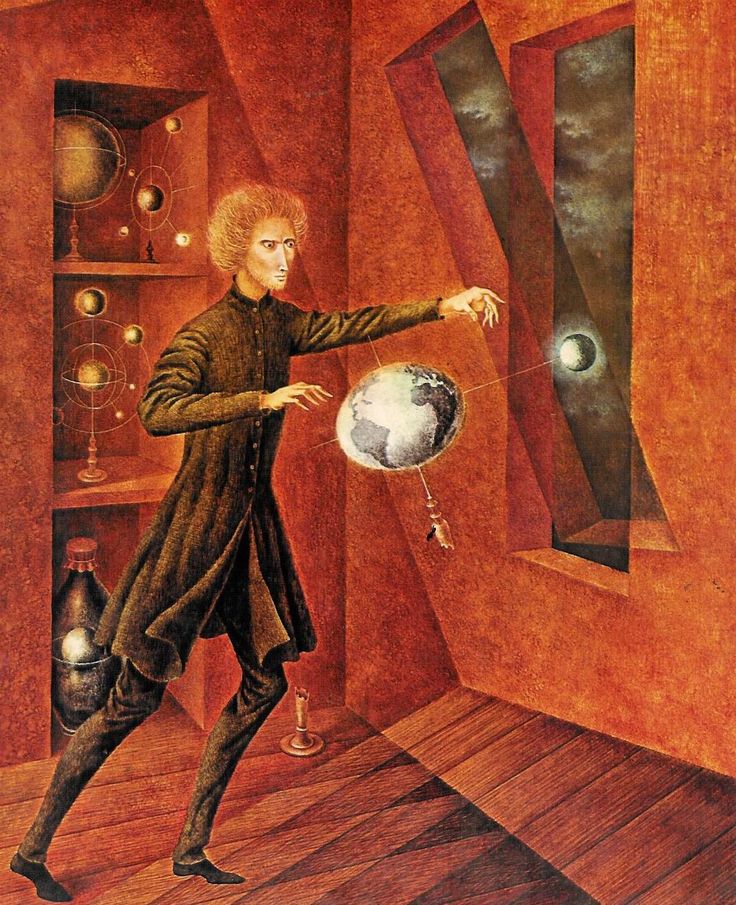Presto!

Remedios Varo’s “Phenomenon of Weightlessness” (1963)
In mathematics, transformations equivalent to what were later known as “Lorentz transformations” in various dimensions were discussed in the 19th century in relation to the theory of quadratic forms, hyperbolic geometry, Möbius geometry, and sphere geometry. In physics, Lorentz transformations became known at the beginning of the 20th century, when it was discovered that they exhibit the symmetry of Maxwell’s equations. Subsequently, they became fundamental to all of physics, because they formed the basis of special relativity in which they exhibit the symmetry of Minkowski spacetime, making the speed of light invariant between different inertial frames.
To depict the so-called Lorentz transformations, which are at the heart of Albert Einstein’s revelation, one would typically draw a standard graph with X and Y axes, then rotate the graph 30 degrees to show how time and space shift for different states of motion.
In Remedios Varo’s 1963 painting, one of many she created that depict scientists at work, an 18th-century astronomer who is somehow at the same time a young Einstein appears to have discovered the special theory of relativity. The X and Y axes of the scientist’s study / laboratory have been — partially, holographically, surrealistically — rotated 30 degrees. Which has created a very cool pattern, among / within the floorboards.
In the weightless atmosphere, an orrery depicting the Earth and Moon has broken free of its base and floats in the air. The scientist waves his fingers around the floating orrery, like a magician doing a trick. Presto!
The semiotician who develops a working semiosphere model is all of these things: astronomer, geometer, mathematician … and (when the time comes to do our client presentation) cheesy magician too.
A selection from a series of posts — originally published by our sister website, HILOBROW — attempting to depict the intellectual and emotional highs and lows of developing a semiotic schema.

